Fed up of fast-paced TV with little substance? Introducing Norwegian slow television. It just might change your viewing habits forever!
Do you ever feel a little overwhelmed with modern life? Norway's broadcasters might just have the help you're looking for.
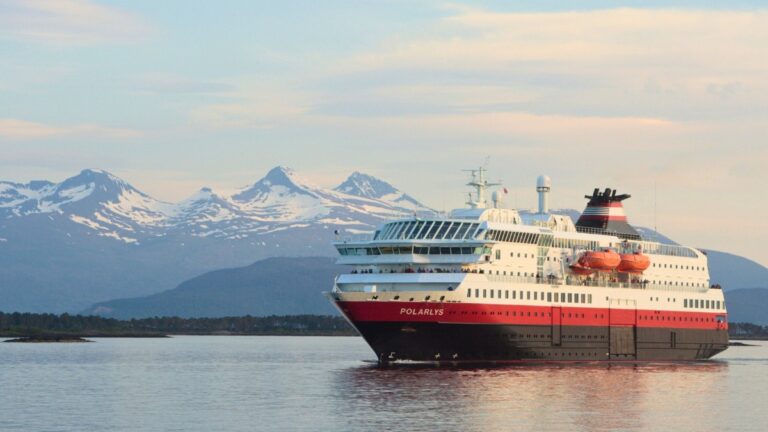
For as long as I remember, I've been a fan of documentaries. Fuelled by streaming services, they are enjoying something of a renaissance of late. But Norwegian TV has its own approach to documentaries that I rarely see elsewhere. Introducing, slow TV.
Table of Contents
What is Slow TV?
A lot of people dash around crowded cites in cars, suffer road rage, spend 8 hours stressing in a cubicle, constantly check email and social media, and throw caffeine and sugar down their throats to fuel it all.
There's no doubt about it, modern life runs at top speed.
Norway is often perceived by outsiders as a peaceful, calming and relaxing place to live, where family and free time take priority over work. It's true, at least to an extent.
Nothing typifies the Norwegian approach to life better than Slow TV, pioneered (at least in modern times) by state broadcaster NRK.
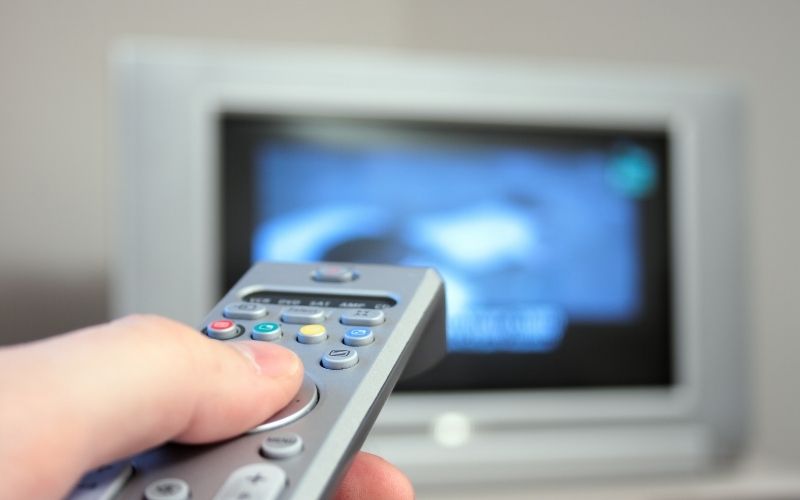
Slow TV is simply the reverse of all the instant gratification reality TV and 24-hour news shows we've learned to love (!) over recent years. It focuses in on one topic and explores it in real-time.
Why slow TV works
The slow TV concept works because of the sheer contrast to our busy lives. It's a chance to slow down the pace and immerse yourself in something that few other kinds of modern entertainment allow.
The early shows allowed viewers to experience iconic journeys in a unique way far removed from holiday brochures or shaky YouTube videos. The more recent experiments add learning into the mix.
Many of the shows are now available internationally through streaming services such as Netflix, although this depends on your country. Here's a selection of the best broadcasts from the last ten years or so:
The Bergen Line
Norway’s Slow TV journey began in 2009 with Bergensbanen – Minutt for minutt, a live broadcast of the entire train ride between Oslo and Bergen.
Filmed from the front of the train and lasting over seven hours, it offered viewers a real-time window onto one of Europe’s most spectacular rail journeys.
Stretching more than 500 kilometres across southern Norway, the Bergen Line is northern Europe’s highest railway, reaching more than 1,200 metres above sea level as it crosses the Hardangervidda mountain plateau.
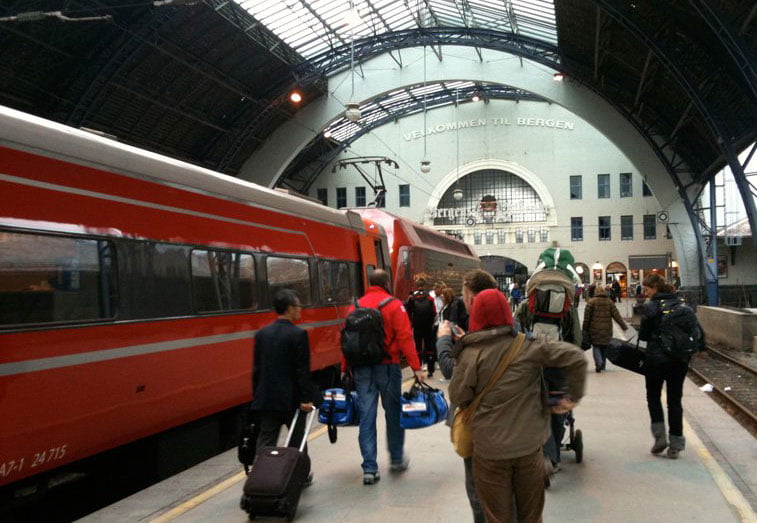
The programme featured uninterrupted footage from the driver’s cab, accompanied by ambient sounds from the train, creating a hypnotic experience unlike anything seen before on Norwegian television.
Rather than cut away during the 182 tunnels on the route, NRK filled those darker moments with archival footage, commentary from railway historians, interviews with passengers and railway workers, and historical photos marking the line’s 100-year anniversary.
This thoughtful storytelling gave depth and context to what could have been a static experience and turned it into something uniquely immersive.
What began as an experimental one-off captured the public imagination. Over one million Norwegians—roughly a quarter of the population—tuned in to watch at least part of the broadcast.
It went on to become one of NRK’s most talked-about productions of the year and laid the foundation for a whole new genre.
Hurtigruten Coastal Cruise
NRK’s next major Slow TV project followed a similar concept but on a far grander scale. It was several days longer!
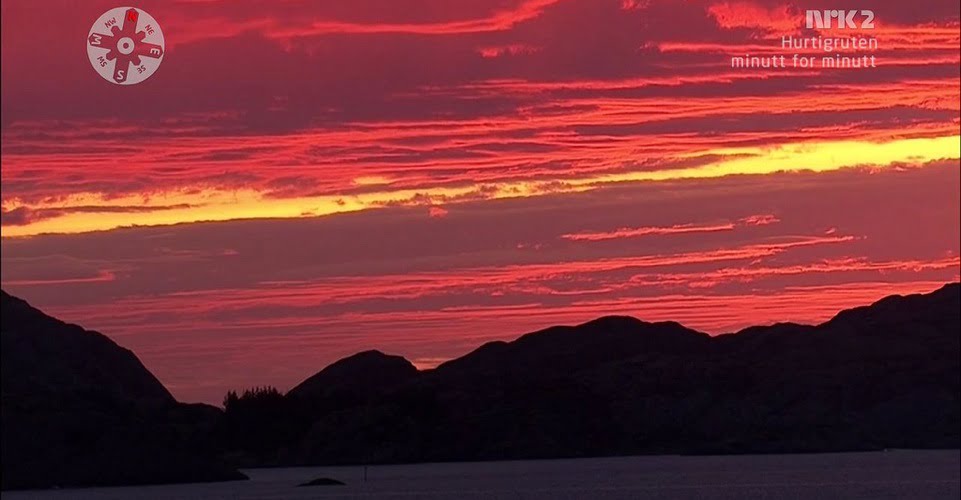
In the summer of 2011, the broadcaster aired a continuous, real-time broadcast of the full northbound voyage of the Hurtigruten coastal ferry. That's 134 hours of sailing from Bergen to Kirkenes.
The Norwegian coastal ferry service is more than just a cruise. It’s a daily lifeline for dozens of coastal communities, functioning as part passenger ship, part freight vessel, and part floating post office.
As the ship made its way north past fjords, fishing villages and Arctic islands, it became a national event. People gathered on shorelines, waved flags, and held signs to greet the ship as it passed, hoping to appear on camera and show off their corner of the country.
The broadcast, titled Hurtigruten – Minutt for minutt, was a runaway success. At least half of Norway’s population watched some portion of the journey, and the production also found an enthusiastic international audience thanks to its online streaming with English-language commentary.
While the full voyage was Slow TV at its most ambitious, a time-lapse version that condensed the 134-hour journey into just 37 minutes was later released and remains one of NRK’s most-watched videos on YouTube.
Though at odds with the meditative spirit of Slow TV, it serves as a striking highlight reel of one of Norway’s most scenic journeys.
Telemark canal
One of the more understated entries in NRK’s Slow TV catalogue, the 2012 broadcast of a journey along the Telemark Canal became a surprise hit both in Norway and internationally.
While the canal cruise is a classic summer activity for Norwegians, it remains relatively unknown to most foreign visitors. That changed, at least in part, thanks to this slow, scenic voyage.
The programme followed the historic MS Victoria as it travelled from Skien to Dalen, navigating Norway’s largest canal system. Over the course of the journey, the vessel climbed 72 metres (236 feet) through eight impressive lock systems, many of which are still operated by hand in the traditional way.
Surrounded by tranquil forests, lakes and old industrial heritage, the canal journey offered a peaceful, almost timeless contrast to NRK’s more expansive maritime broadcasts.
Like other Slow TV projects, the real-time format invited viewers to experience the rhythm of travel—watching the landscape unfold slowly and appreciating the human effort behind this 19th-century engineering marvel.
Firewood night
Two years later, NRK repeated the experiment with yet another twist. The focus moved away from iconic transport and onto iconic Norwegian activities, in this case, burning wood!
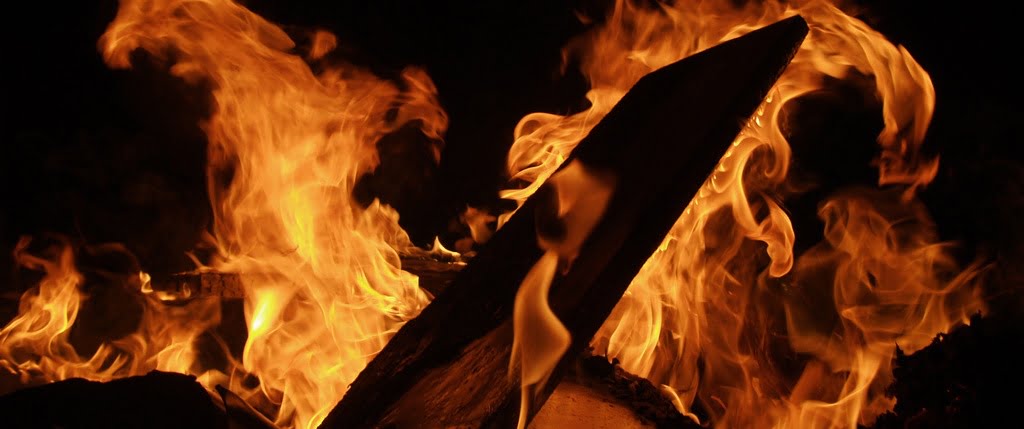
Burning wood is an important traditional activity. Collecting and drying wood, starting a fire, and keeping it going are all valuable skills out in rural Norway. After a day's skiing in the mountains, you'll be glad of the skills to warm up your cabin, and keep the fire burning all night.
The show featured interviews and advice about wood, followed by a live broadcast of the fire. Believe it or not, it was strangely compelling viewing!
The Norwegian knitting night
Following the success of the firewood night came the knitting night! The first four hours featured detailed discussion about knitting, another activity loved by Norwegians, albeit the older generation.
The attention then turned to knitting itself as the participants tried – and failed – to break a World Record for the quickest time “from sheep to jumper”. Not my thing, but once again the format was widely popular.
Piip-Show
NRK broadcasted a bird feeder set up to look like a coffee shop, 24/7. Yep, you read that right! To top it all off, yes, the show is pronounced “peep show”.
Different personalities meet inside the bar. Among others a short tempered nuthatch, a blue tit with the memory of a gold fish, a happy-go-lucky great tit, and a depressed bullfinch. Like in any other bar there is bickering, petty theft, fighting and attempts at romance. But what are the birds actually saying to each other? – NRK
It's been an online hit through the hashtag #nrkpiip and viral images like these:
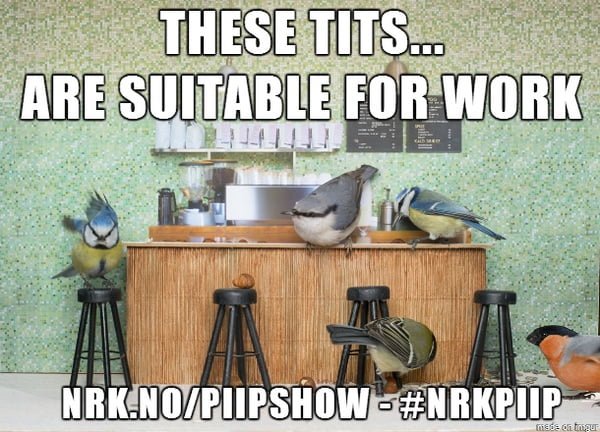
Live reindeer migration
NRK cameras followed a Sami herder family and their reindeer as they moved from their winter habitat on the Finnmark mountain plateau to their summer calving and grazing pastures on the coast of the Barents Sea.
That was the plan at least. Reindeer migration is a slow process, and for whatever reason the herd didn't start moving according to the TV schedule!
TV2's Fly With Us
Rival commercial broadcaster TV2 came up with its own twist on slow TV with their Fly med oss concept. A TV2 helicopter toured the country broadcasting live to a set schedule, which allowed keen locals to mark the occasion by creating signs or getting creative in other ways.
Some groups of schoolchildren spelled out words, keen hikers climbed to some of Norway's tallest peaks to wave a flag at just the right moment, while classic car club members drove the Atlantic Road. A certain website editor was caught on camera without even realising it!
What would you like to see turned into a slow TV series?

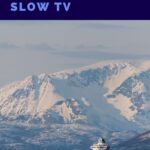

Can we buy these films as DVDs?
Are there DVD’s of Slow TV for purchase?
Thank you,
Donna
Hi Donna – if you look up “Slow TV Fans, Thinkers and Filmmakers” on Facebook, we have a community of folk centred on Slow TV – come and ask your question over there!
I also blog about Slow TV…
Hi Tim, Can you send me a link to that please, and also your blog? We have a radio show, Slow Living Radio, and would love to join this community. Would you like to be a guest on our radio show? You can email me at [email protected].
I live in the US and I love your slow tv. While watching the Olympics this weekend it occured to me that I would love to watch cross-country skiing from Norway on slow tv. Has a segment like this already been filmed? THank you.
Slow TV is available for free on pluto tv.